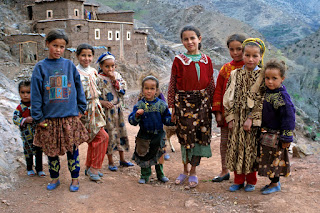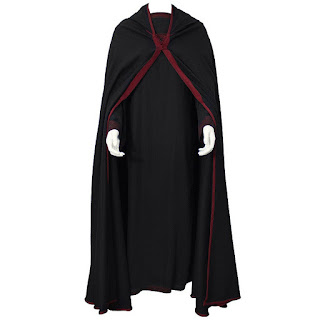Moroccan lifestyle
 |
Moroccan lifestyle |
Social life
 |
| Schooling |
Health and retirement
Morocco has taken seriously public health problems, the results are sensitive. Unfortunately, programs undertaken with the population are not yet at the expected levels. The care system is double speed. Moroccan doctors are very well trained and the advanced sectors are developing, but only an affluent part of the population has access to them and the public hospital remains deplorable. Social protection is reserved for an elite, the only one able to pay this cost. In addition, a large number of Moroccans do not benefit from a pension system.
Burial
We bury the dead on the ground, the body turned towards Mecca, after a prayer at the mosque.
Dress code
In contemporary Morocco, the difference is really obvious between the outfits of emancipated young people from big cities, whose clothing is comparable to that of young Westerners, and the traditional costumes worn by rural inhabitants. If you are a woman, remember that you are in a Muslim country whose dress codes are different from ours. Avoid provocative outfits, too low-cut or too short (miniskirts and shorts), which shock the majority of Moroccans. It is especially the inhabitants of the countryside who remain faithful to the traditional dresses. In the North, particularly the Tetouan region, women wear large straw hats held up by wool ribbons and decorated with pompoms. In Fez, you will meet more and more rarely the fez or "tarbouche", a conical hat of red wool, used by Hergé to represent the Arabs in Tintin in the land of black gold.
Burnous. Coat of wool with hood and sleeveless, worn mainly by the peasants of the Atlas.
Caftan. A feminine garment of oriental origin, it is a kind of ample and long coat, of silk, velvet, or brocade. Often worn at parties such as weddings.
Scarf. Indispensable against sunburn, this turban protects the skull much better than a hat.
Gandoura. Tunic without sleeves falling to the ankles, often very light and worn in the South by men.
Haik. Cotton or wool voile folded over the faces of women. Its color is the sign of a regional belonging (white in Essaouira, blue in Taroudant).
Jabador. Man's jacket with an officer's collar closed with many buttons. This ceremonial garment, cut in a noble fabric, often richly embroidered, is worn on a saroual.
Lizar. Great stuff that women wrap, held by a belt or fibulae and topped with haik.
Saroual. These baggy trousers have a wide and fitted waistband, and their legs, buttoned at the ends, stopover the ankle.
Taguia. Hat made of fabric or knitted in wool or cotton thread.
Morals and facts of society
Wedding
In Morocco, marriage is an important moment for all the family but especially for parents and honeymooners. Arranged marriages are still practiced but are becoming less common, although they are still prevalent in rural areas. Moroccan society is very conservative. Thus, it is well seen to publicly honor the union of marriage as it should be. The first step is the marriage proposal, which corresponds to the betrothal, khetab. The future husband accompanied by his parents asks the young woman's hand to the future parents-in-law. Once both parties agree, the adventure can begin. The bride and groom will have to go to the adul to sign their marriage certificate according to the Muslim tradition which gives rise to a religious ceremony bringing together only the close family. The big party usually takes place over several days and can last up to a week, depending on the desire and the means of the families.
Polygamy is a generic term for a union in which the man has more than one wife, but also the alliance between a wife and several spouses. In the first case, the exact term is polygyny; in the second, we speak of polyandry. Polygyny is allowed by Islam, according to the family code in Morocco. It requires the permission of the first wife. It can refuse this possibility by stipulating a clause of monogamy in the marriage certificate. Despite this authorization, the sacred book of the Koran advises monogamy, "If you fear not to be equally fair to wives, marry only one woman". Islam limits the number of wives to four for every polygyny-loving man (provided that he can provide for each one in a fair way, the Qur'an says). This practice is especially prevalent in rural areas. Nowadays, it has virtually disappeared because of urbanization, economic conditions, the improvement of women's status - due in part to the rise of feminist movements, which are fighting for their rights - and all simply, following the evolution of manners. Admittedly, polygamy is not abolished in Morocco but is experiencing an unprecedented regression especially since the adoption in 2004 of the Moudawana, a family code that makes it difficult to polygamy by subjecting it to draconian conditions. It is allowed, but the head of the family must be able to support the needs of his wives and their children and justify in a court, for concrete purposes, his recourse to this practice.
Religion
Sunnis and Shiites. Muslims are separated into two major families: Sunnis and Shiites. The historical origin of this schism is the struggle led by Ali, the son-in-law of Muhammad and the fourth caliph, against the Umayyads in power in Damascus. Finally, Ali, father of the only direct male descendants of Muhammad, was defeated, and the chief of the Umayyads was designated as the legitimate caliph. Sunnis are the followers of the Umayyads (of Sunna, tradition), who are in the majority in the world, while the followers of Ali are called Shiites, they are found for example in Iran or Azerbaijan. The differences between these two families are essentially historical (more than theological or practical) and reside in a number of different recognized imams (religious leaders).In Morocco, the vast majority of the population is Sunni and is attached to the Malikist doctrine, less austere in the application of the Koran than others. There are also many fraternities, which have a very distant relationship with the monks of the Christian religion. In zaouïas, centers of gathering brotherhoods, one venerates a saint, even if Islam does not recognize saints in the biblical sense of the term.
The Muslim calendar, also called the Hegira calendar, in reference to the flight of the Prophet Muhammad from Mecca to Medina, begins July 16, 622 (date of this flight). In addition to this shift of more than six centuries compared to the Christian calendar, the Muslim calendar takes as reference the movement of the Moon, while ours is inspired by the movement of the Sun. As a result, in the Hegira calendar, the months are 29 or 30 days and the years 354.5 days. The Muslim holidays are thus advanced ten or eleven days depending on the year, compared to the previous year in the Christian calendar. The year 2018 of the Christian calendar corresponds to the year 1439 of the Muslim calendar.
Circumcision is not recommended by the Qur'an, but this custom, which predates the Book, has nevertheless been incorporated into Muslim practices. For the young Muslim, it is the rite of passage in the community of believers. Circumcision is either practiced in the first week after birth, or in a ceremony involving all young people of the same age, and it is then the occasion of a big party.
The moussem is a regional religious celebration, organized to date (approximately) fixed around a sanctuary. It is an opportunity for a pilgrimage but also many folkloric events (fantasias, fairs, dances ...) around which meet the different tribes of the region. Formerly exclusively related to the commemoration of holy personages, today's moussems often punctuate the end of a harvest or accompany a happy event in a village: dates moussem Erfoud, moussem almond Tafraoute, honey moussem Imouzzer. ..Traditionally, it begins with the sacrifice of an animal (usually a bull) in front of the sanctuary that houses the bones of the marabout. The sacrifice of the animals must bring the baraka, this grace that everyone calls his wishes. Muslim moussems and festivals are part of various beliefs that reflect the cultural identity of many Moroccans.
The five pillars of Islam
Among the rules of life set out in the Qur'an, five are fundamental: Shahada, the profession of faith whose only sincere repetition suffices to assert a Muslim: "There is no other God but Allah and Muhammad is his prophet.
"Zakat, the legal alms. It is a duty for everyone to give to the poor.
Hajj, the pilgrimage to Mecca, is considered the apotheosis of a godly life. Every Muslim should do it once in his life. However, not all can, and Islam provides exemptions. The recommended period is the last month of the year (Hegira), a time when Muslims from all over the world gather in Mecca or its surroundings.
Sala or Salat, the ritual prayer that must be performed five times a day after ablutions. If the prayer common to the mosque is the most important, however, one can pray anywhere and even in the desert where, in the absence of water, one will make his ablutions with sand; it is enough to turn to Mecca. The day most dedicated to Allah is Friday. On this day, the faithful traditionally go to the mosque
.Sawm, the fast of Ramadan, commemorates the revelation of the Qur'an to Muhammad. During the ninth month of the Islamic calendar, every Muslim must observe a certain number of rules between sunrise and sunset. He is prohibited from smoking, drinking, eating, and having sex. Life takes a particular rhythm during the day, but from the moment of breaking the fast, the atmosphere is rather at the party.
The call to prayer
In Morocco and in all Muslim countries, the days are punctuated by the call to prayer, which sounds five times a day. The call to prayer al-adhan is the announcement made by the muezzin, using a loudspeaker, from the top of his minaret at the time of the five daily prayers (at dawn, at noon, at vespers, at sunset, and at dusk). The hours of prayer vary according to the seasons. To go to the mosque is advised; literally, the translation of mosque into Arabic is jāmi (which means "gathering") or masjid, "laying the forehead to the ground" (borrowed from Aramaic). It is the place where believers find themselves, all equal before Allah.
In Morocco and in all Muslim countries, the days are punctuated by the call to prayer, which sounds five times a day. The
call to prayer al-adhan is the announcement made by the muezzin, using a
loudspeaker, from the top of his minaret at the time of the five daily
prayers (at dawn, at noon, at vespers, at sunset, and at dusk). The hours of prayer vary according to the seasons. To go to the mosque is advised; literally,
the translation of mosque into Arabic is jāmi (which means
"gathering") or masjid, "laying the forehead to the ground"
(borrowed from Aramaic). It is the place where believers find themselves, all equal before Allah.see as well :
















